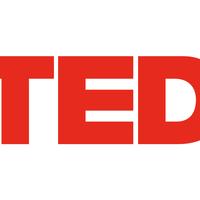Siegfried Woldhek shows how he found the true face of Leonardo
Good morning.
Let's look for a minute at the greatest icon of all, Leonardo da Vinci. We're all familiar with his fantastic work -- his drawings, his paintings, his inventions, his writings. But we do not know his face. Thousands of books have been written about him, but there's controversy, and it remains, about his looks. Even this well-known portrait is not accepted by many art historians. So what do you think?
Is this the face of Leonardo da Vinci or isn't it? Let's find out. Leonardo was a man that drew everything around him. He drew people, anatomy, plants, animals, landscapes, buildings, water, everything. But no faces? I find that hard to believe. His contemporaries made faces, like the ones you see here. En face or three quarters. So surely a passionate drawer like Leonardo must have made self-portraits from time to time. So let's try to find them. I think that if we were to scan all of his work and look for self-portraits, we would find his face looking at us.
So I looked at all of his drawings, more than 700, and looked for male portraits. There are about 120, you see them here. Which ones of these could be self-portraits? Well, for that they have to be done as we just saw, en face or three-quarters. So we can eliminate all the profiles. It also has to be sufficiently detailed. So we can also eliminate the ones that are very vague or very stylized. And we know from his contemporaries that Leonardo was a very handsome, even beautiful man. So we can also eliminate the ugly ones or the caricatures. (Laughter) And look what happens -- only three candidates remain that fit the bill.
And here they are. Yes indeed, the old man is there, as is this famous pen drawing of the Homo Vitruvianos. And lastly, the only portrait of a male that Leonardo painted, "The Musician. Before we go into these faces, I should explain why I have some right to talk about them.
I've made more than 1,100 portraits myself for newspapers, over the course of 300 -- 30 years, sorry, 30 years only. (Laughter) But there are 1,100, and very few artists have drawn so many faces. So I know a little about drawing and analyzing faces. OK, now let's look at these three portraits. And hold onto your seats, because if we zoom in on those faces, remark how they have the same broad forehead, the horizontal eyebrows, the long nose, the curved lips and the small, well-developed chin. I couldn't believe my eyes when I first saw that.
There is no reason why these portraits should look alike. All we did was look for portraits that had the characteristics of a self-portrait, and look, they are very similar. Now, are they made in the right order? The young man should be made first. And as you see here from the years that they were created, it is indeed the case. They are made in the right order. What was the age of Leonardo at the time? Does that fit? Yes it does. He was 33, 38 and 63 when these were made. So we have three pictures, potentially of the same person of the same age as Leonardo at the time.
But how do we know it's him, and not someone else? Well, we need a reference. And here's the only picture of Leonardo that's widely accepted. It's a statue made by Verrocchio, of David, for which Leonardo posed as a boy of 15. And if we now compare the face of the statue, with the face of the musician, you see the very same features again. The statue is the reference, and it connects the identity of Leonardo to those three faces. Ladies and gentlemen, this story has not yet been published.
It's only proper that you here at TED hear and see it first. The icon of icons finally has a face. Here he is -- Leonardo da Vinci. (Applause)

